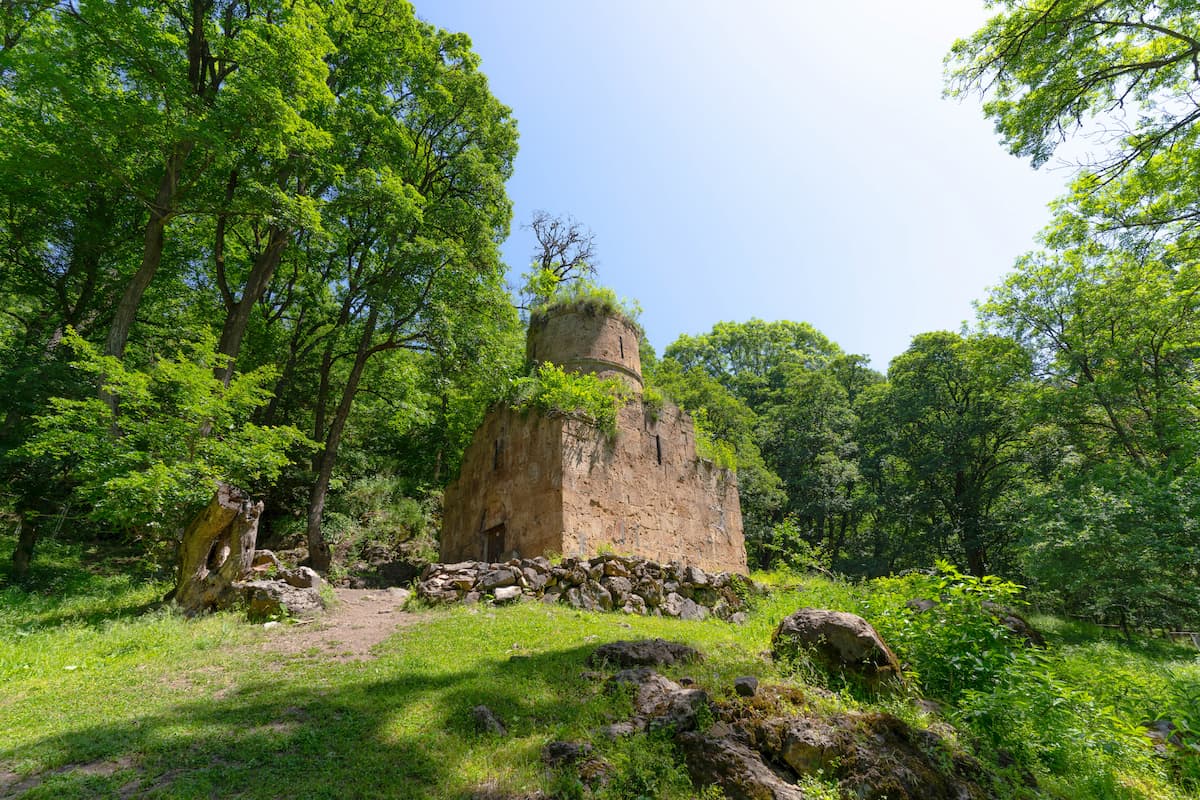Aghavnavank monastery complex

The monastery complex of Aghavnavank is located near the village of the same name, in the heart of a yew grove. There is little information available about this complex. It is known that it was built approximately in the XII-XIII centuries and is a classic example of Armenian church architecture.
Unfortunately, time didn’t spare Aghavnavank. The temple is located on a slope of low-lying cliffs and has been exposed to winds for centuries. Its walls are overgrown with moss, and the dome is almost destroyed and overgrown with greenery.
The church is a small central-domed structure with vaults, distinguished by the yellowish color of a rare stone. On the western facades of the sacristy, there are traces of carvings with ornaments and fonts typical for the High Middle Ages. There are ruins of many buildings to the south of the temple, probably former cells and household buildings of the church parish.
Aghavnavank is translated from Armenian as “temple of doves”. The unique, light color of the stone from which the temple was made, and the surrounding landscape really create a peaceful and calm atmosphere, matching the “temple of doves”.
The church is located in a yew grove, a unique forest in Dilijan National Park. Some of the trees in the yew grove are about 400 years old. Let alone the monastery complex, which is much older.
Any other questions?
Our specialists will contact you as soon as possible




